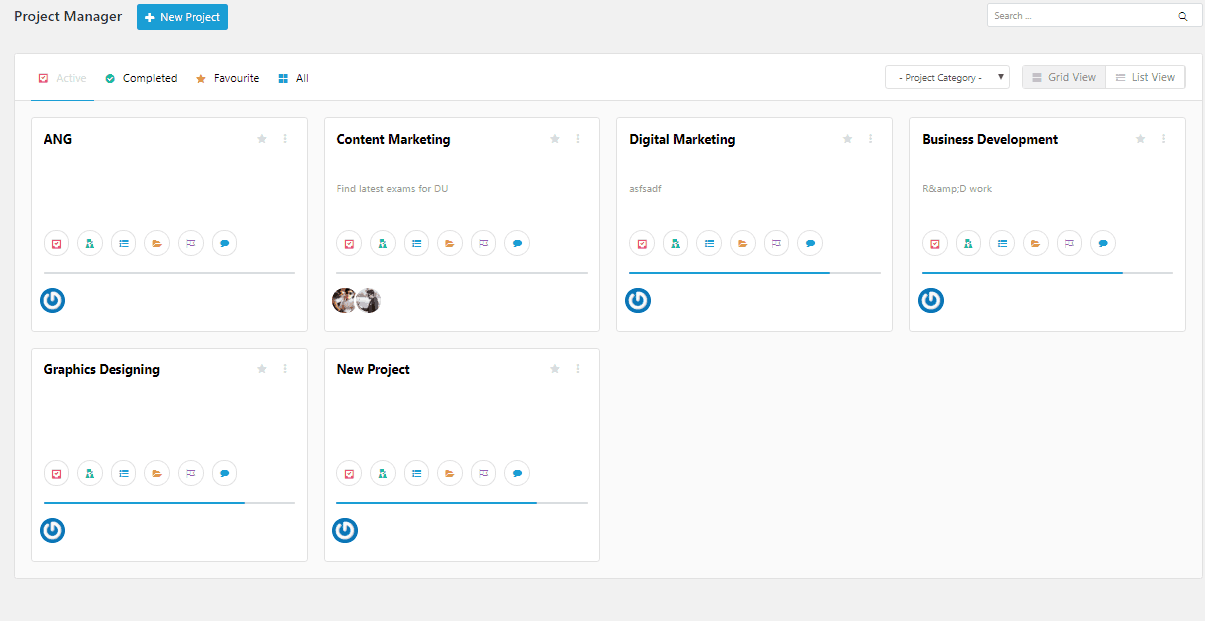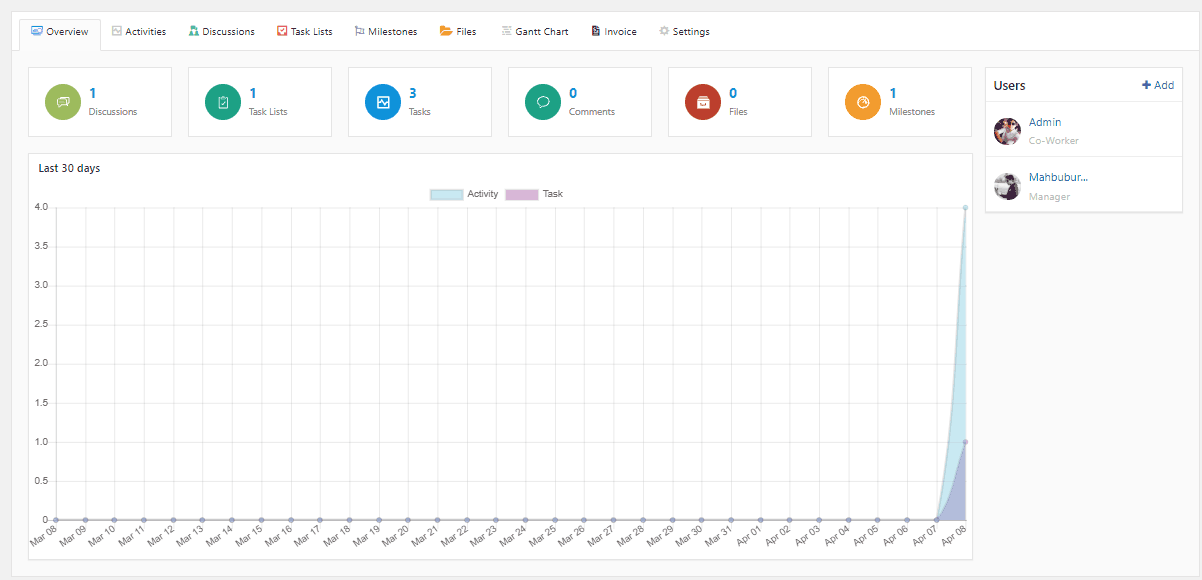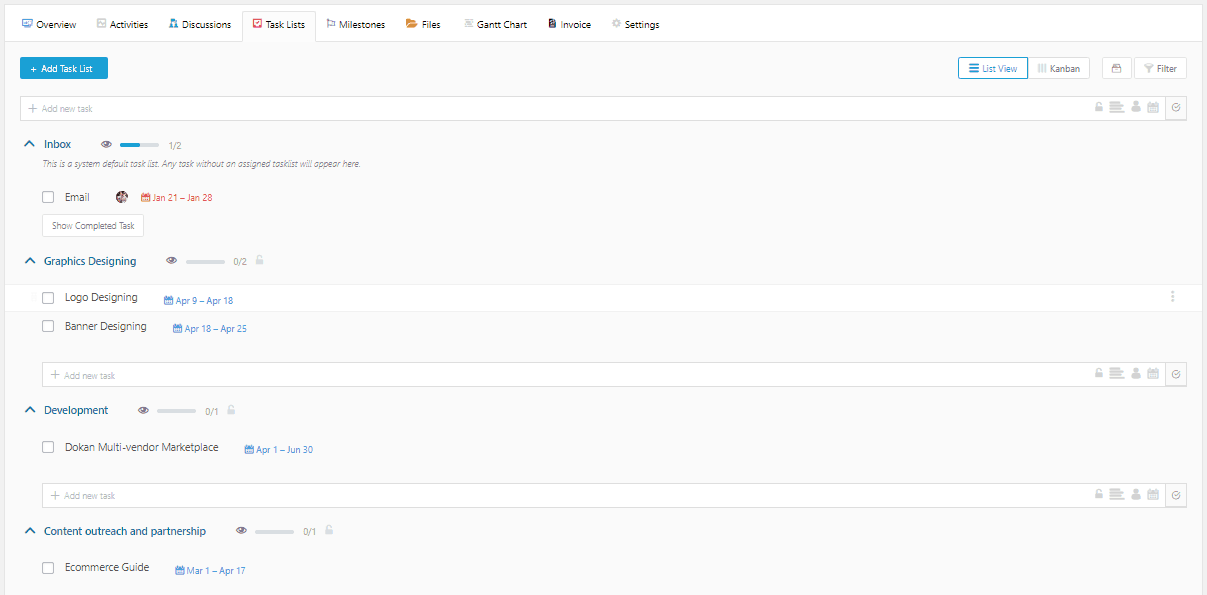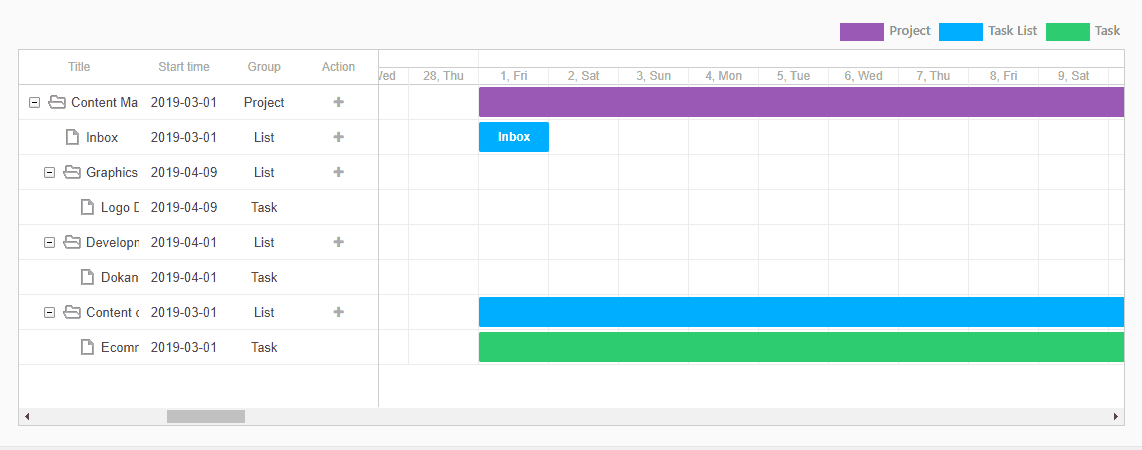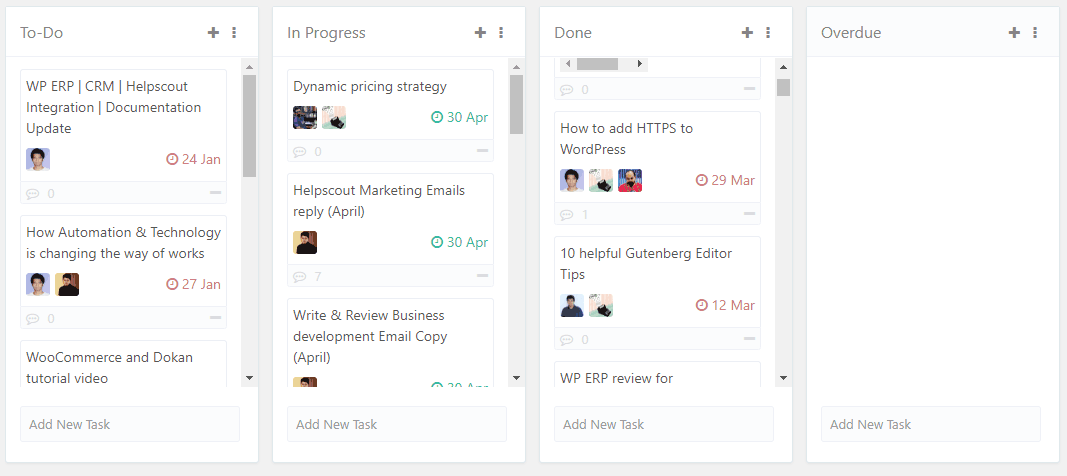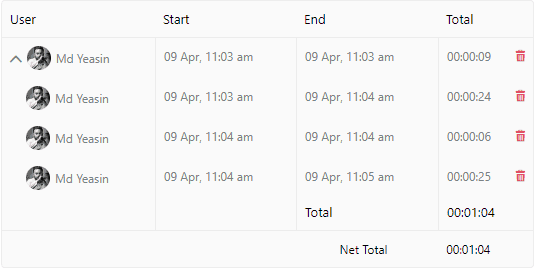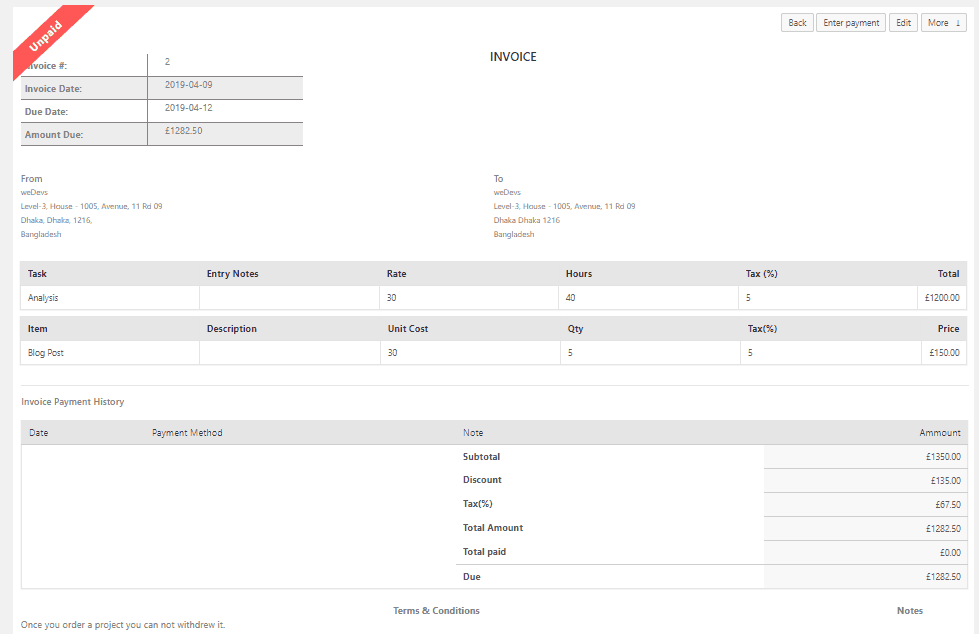From a very young age, we’ve been taught to work in groups. It starts with task groups in school, evolves into team study projects at college and reaches its final stage in work-oriented departments when we’re working as adults. Through all this, the biggest responsibility falls on the team leader who has the daunting task of managing his co-workers and their tasks, as well as taking into account everything is done correctly in the allotted time and keeping track of the big picture at all times.
In 2018 we find ourselves removed from the “whiteboard and marker” way of doing things.
Tools that are, at the same time, easy to use for those not versed and robust and complex enough for who are advanced or even expert users.
From the tone it’s easy to come to the conclusion we’re edging to the technical side of project management – this is a site primarily aimed at web developers/users after all. Using an online project manager everybody has access to, apart from being more efficient than any physical toll, also lets you bridge geographical and timezone gaps offering every participant an equal opportunity to contribute.
With WordPress being by far the most used platform for everything site management related we’ve scrounged through available plugins for you and came back with WP Project Manager PRO from weDevs – a plugin that checks all the right boxes and lets you run your team as you should.
Project management basics
Let’s say you’re a project, team or department leader and you’ve been given the task of starting a big and important project for a global commercial site with your co-workers. You’ve decided to incorporate the given task into WordPress for easier management (some of your co-workers are developers from different countries) by using a plugin and therefore removing the need for any outside addendums (be they virtual or physical). While familiarizing yourself with the ins and outs the first thing you’ll come across is also one of the most important ones – the overview.
The overview, or dashboard in this case, is the place where you’ll want to focus your attention each time you log into WordPress. Since it also somewhat doubles as a homepage of sorts this shouldn’t come as a chore. Every time you open it you’ll be greeted with a summary of all active and completed projects (filtered by what you want to see of course), as well as some basic information for each of them (number of tasks, comments, milestones etc.).
While your dashboard represents a summary of all projects every member of your team will have to keep track of their work and overall progress of work on the project (according to their assigned status). This is why everybody will be presented with their personal dashboard. Using it they’ll have a limited summary of their own that should help them manage their own work you’ve assigned to them.
Assigning tasks and roles
Now that you know where to get a quick summary of your teams work you’ll want to start that big project. Going into this you’ll want to have an outline of what tasks you’ll have to complete and in what time you want them done in order for the project to be successful. When you know this it’s just a matter of allotting the right task to the right person.
Not every person in the task group will have the same clearance, ability or knowledge. It will fall on you as the leader to assign roles to your co-workers that will maximize their potential. After all, it’s your job to get the most of them by putting them in a position (or assigning them a task in this case) in which they will shine.
Some will do their best work “in the trenches”, other while shadowing and verifying work done by others and you can even give your clients access to the process if you want to. Ultimately it’s your decision and also your responsibility.
Micromanaging and communication
Big projects are complex, containing a lot of moving parts – people, tasks, deadlines, etc. Keeping track of all of them can be extremely difficult if you don’t have a good system in place. The solution for this particular predicament presented itself a long time ago – a calendar. When software solutions weren’t available you’d have to use a physical calendar to note anything and everything worth noting, but in the digital age, this is much easier and much more efficient.
Instead of using a paper and pencil, use an integrated calendar where you’ll be able to track the progress of all projects and tasks within them. The most important thing the calendar lets you track is the deadlines of specific tasks. You won’t be caught off guard if you check the calendar regularly and it also helps you keep your teammates on point with their tasks.
Although the calendar can still be considered the overall base for micromanaging your team there are other reports you’ll want to use. These include various reports that help you and therefore your team immensely moving toward the completion of the main goal.
Depending on your needs, you’ll want to use daily or periodical reports and if the specific project/task is especially crucial even both. Checking them regularly will help you, much like the calendar, in controlling your team and making sure everything is done in time.
Speaking of teammates, you’ll want a way to communicate with them about everything. Everybody working for themselves without checking in (with you or others) is not something you’ll want to occur on any kind of projects, much less important ones. Communication is a key component of a successful process and should be treated as such.
Using apps outside of the plugin you’re working with is an option, actually, it’s the most common option, but it’s so much easier if you have everything in one place.
For easy reference, all conversations will be saved which means you can look back on any of them – you’ll be thankful for such a thing on projects that last for several months. Things that were said tend to get lost in the shuffle of tasks and deadlines, but having a database to fall back on will make it easier for everyone involved. In general, keeping lines of communication open between everybody in the team has proven to be essential for success.
Next level modules
You’ve done a project or two successfully and want to elevate your work to the next level. Bringing your projects up a level will most certainly require more advanced software support than your average plugin. Incorporating a work timer can help you manage your time more effectively and boost your productivity.
Using the calendar for managing tasks isn’t enough for you – you want to use a more robust method, for example, the Gantt chart. Everybody who has ever done any kind of work-flow analysis knows a thing or two about Gantt charts. With their intricate representation of tasks, their relationships and deadlines they’ve stood the test of time and even a hundred years after their conception still prove to be a useful part of business analytics. Using them while planning your tasks and the tasks of your team will without a doubt increase your overall efficiency, and using the will be a breeze if you’re using the Gantt Chart module.
The Toyota way production system has in its time represented a global phenomenon, eventually inspiring the lean management school of thought. Being so successful it’s no wonder it’s used in organizational schemes even today, especially since it’s based on simple, easy to understand and execute actions. One of the core methods in the heart of lean management is Kanban, more specifically the Kanban board.
It represents columns (which are distinct from one another) that contain tasks. The idea is to use the columns to represent, for example, the status of various tasks making it easy to see what was done, what is being worked on and what is yet to be started. With its fluid concept, you just switch the tasks between the columns as you see fit identifying each task individually and keeping track of the whole process at the same time. Something like this is ideal for team leaders needing a fresh perspective on their project and works beautifully with the Kanban Board module.
With Kanban, you’re going the simple, visual route making it easy on your eyes without going into too much detail, but you can certainly go the other way. If extremely complex tasks are giving you or your teammates trouble, you’ll have to break them down to a smaller task that is easier to complete. The Sub Task module is perfect for just those instances. Creating secondary to-do lists inside already formed tasks (and their initial to-do lists) helps you create something similar to a goal system. Making the smaller tasks attainable goals that build upon each other in the end amounting to, or forming, the initially unobtainable higher goal.
This method also represents a way to entice additional cooperation amongst teammates and raise efficiency since you’ll be in a position to bring in more people working separately on a solution (checking off smaller things), but in essence, working together to resolve the bigger issue much quicker than one person could.
If you’re one of those team leaders that prefer a hands-on approach that requires more in-depth tracking of the task process, you’ll need something more to keep track of your teammates. Deadlines are a go-to indicator of a team’s or person’s efficiency, they are either met or they’re not, there simply isn’t two ways about it. However, there is the option to go even deeper in measuring the work somebody has put in.
Using the Time Tracker module you’ll be able to log all the time you’ve spent working on a specific task. Now, this probably isn’t a feature a team leader will use for himself (although most team leaders also have somebody they report to), but he can demand it of the co-workers under him. Making it mandatory to log your time can give you an insight into how fast someone works, or even the complexity of the given task (maybe it’s more or less complex than you originally thought). This shouldn’t be looked at like something negative, but quite the contrary – if a subordinate proves to be efficient in his work it could lead to benefits in the future.
Large companies often have a complex organizational structure with the board, departments, teams, etc. Your job as a boss or project manager with administrative authority will be, among other things, to assign certain rights to individuals and groups relating to the projects themselves. These can be above you (board members), below you (department heads), or even outside the company (clients).
As you may have guessed not everybody will be granted the same rights concerning task creation, editing or viewing. The BuddyPress is an elegant module with witch all your grouping problems will be solved. You’ll be able to assign rights to groups that encompass roles you’ve defined earlier and in doing so create the proper hierarchy for your projects that already exist in your company.
Most of the sites that’ll be using software such as project managers tend to be commercial, or at least have a commercial section with some kind of web shop. Projects that are closely related to sales tend to be more sensitive than those which are more analytical in nature. This is because every project can be a sale and whenever you’re directly interacting with a client extra caution is recommended. When considering how this interaction will play out it’s important to have a solid, proven infrastructure set on which you can then build.
WooCommerce is probably the most used online selling platform for WordPress and is, therefore, an excellent choice to use. Thankfully the WooCommerce Order module integrates the platform into a project surrounding seamlessly. You’ll be able to set up projects and tasks that are automatically generated each time an order is placed, making managing every order as simple as can be. The choice to whom the project will be assigned, or even who’s privy to see it is up to you as the admin.
Speaking of commerce and web shops it’s hard not to mention invoices and payment methods. Generating invoices should be self-explanatory – the Invoice module gives you the option of creating invoices that will be eventually sent to your clients. It’s set up so that you can follow the whole process through from beginning to end – starting with the creation with all the accompanying articles or services performed, through the issuing to the clients and finally the payment.
With the Invoice module, you’re only given the option of PayPal payments. However, with the Stripe Gateway module you’ll get, as the name suggests, access to the Stripe payment processing platform. With it, your clients will be able to use their credit and debit cards to complete their orders and payments giving you an even wider consumer base.
Summary
With everything mentioned, on real-world examples, it’s quite easy to see why this plugin, with its modules, is an essential tool for anybody working on projects, big or small. Every module is specifically created to fill a certain need in the whole process and works flawlessly exactly for what it’s intended. Your ability to organize your team, follow through with given projects and tasks and ultimately improve your overall efficiency will be much greater with WP Project Manager.
